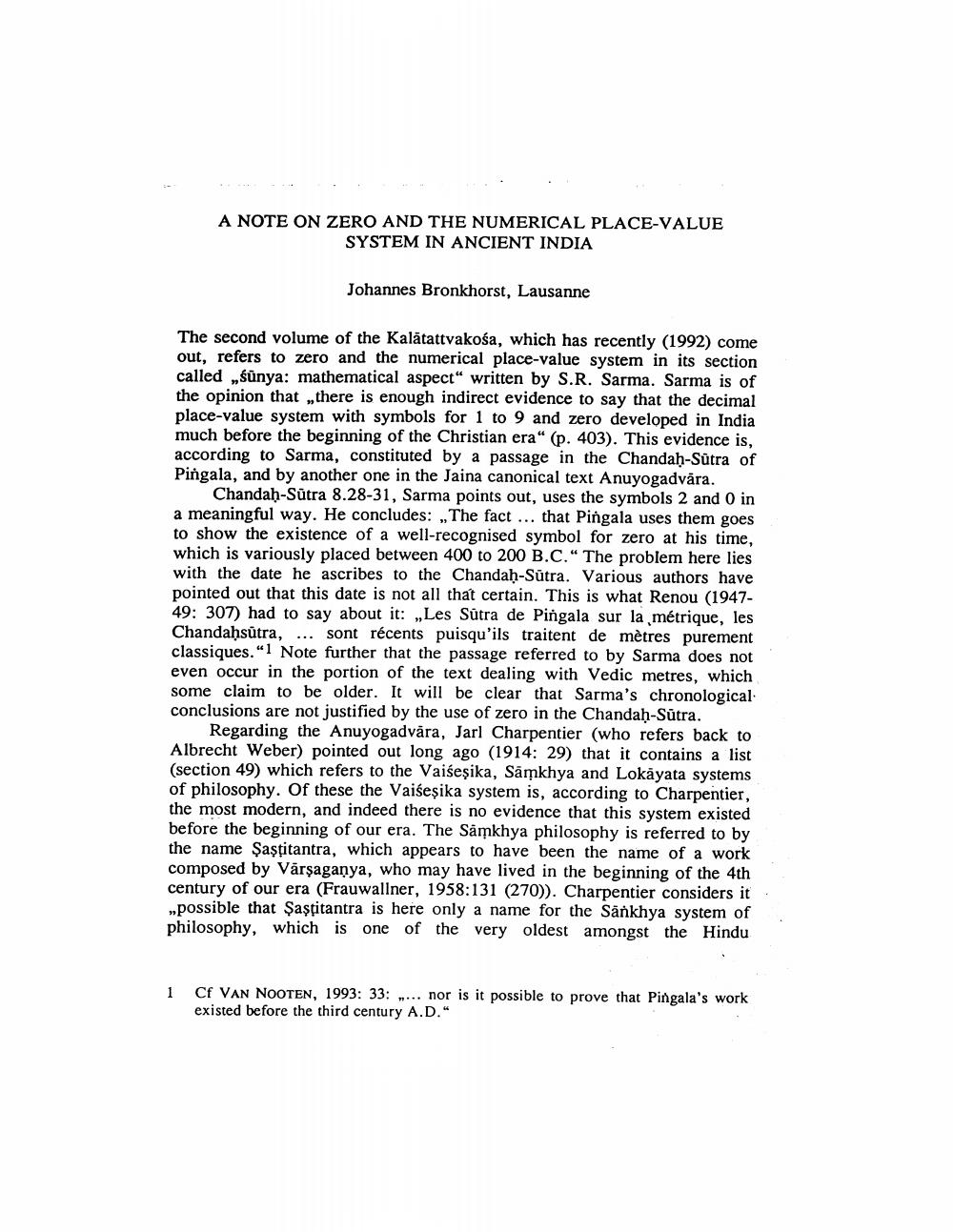Book Title: Note On Zero And Numerical Place Value System In Ancient India Author(s): Johannes Bronkhorst Publisher: Johannes Bronkhorst View full book textPage 1
________________ A NOTE ON ZERO AND THE NUMERICAL PLACE-VALUE SYSTEM IN ANCIENT INDIA Johannes Bronkhorst, Lausanne The second volume of the Kalātattvakośa, which has recently (1992) come out, refers to zero and the numerical place-value system in its section called sünya: mathematical aspect" written by S.R. Sarma. Sarma is of the opinion that there is enough indirect evidence to say that the decimal place-value system with symbols for 1 to 9 and zero developed in India much before the beginning of the Christian era" (p. 403). This evidence is, according to Sarma, constituted by a passage in the Chandah-Sutra of Pingala, and by another one in the Jaina canonical text Anuyogadvāra. Chandah-Sutra 8.28-31, Sarma points out, uses the symbols 2 and 0 in a meaningful way. He concludes: ,,The fact ... that Pingala uses them goes to show the existence of a well-recognised symbol for zero at his time, which is variously placed between 400 to 200 B.C." The problem here lies with the date he ascribes to the Chandah-Sutra. Various authors have pointed out that this date is not all that certain. This is what Renou (194749: 307) had to say about it: ,,Les Sūtra de Pingala sur la métrique, les Chandahsūtra, ... sont récents puisqu'ils traitent de mètres purement classiques." Note further that the passage referred to by Sarma does not even occur in the portion of the text dealing with Vedic metres, which some claim to be older. It will be clear that Sarma's chronological conclusions are not justified by the use of zero in the Chandah-Sūtra. Regarding the Anuyogadvara, Jarl Charpentier (who refers back to Albrecht Weber) pointed out long ago (1914: 29) that it contains a list (section 49) which refers to the Vaiśeşika, Samkhya and Lokāyata systems of philosophy. Of these the Vaiśesika system is, according to Charpentier, the most modern, and indeed there is no evidence that this system existed before the beginning of our era. The Samkhya philosophy is referred to by the name Şaştitantra, which appears to have been the name of a work composed by Varşaganya, who may have lived in the beginning of the 4th century of our era (Frauwallner, 1958:131 (270)). Charpentier considers it ,,possible that Şastitantra is here only a name for the Sankhya system of philosophy, which is one of the very oldest amongst the Hindu CF VAN NOOTEN, 1993: 33: ..... nor is it possible to prove that Pingala's work existed before the third century A.D."Page Navigation
1 2 3 4
